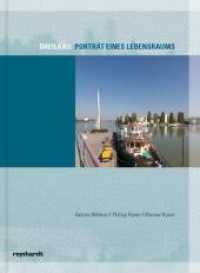Full Description
Telling the story of a library through assessment has always been an essential aspect of library administration and management, but doing this work effectively can be challenging. Academic libraries are increasingly being asked to demonstrate impact and value to their institution. Even for experienced library leaders, sustaining awareness of varying audiences and changing priorities, as well as keeping up with best practices for assessment and reporting, requires ongoing consideration and adaptation. This is particularly true if the goal is to enhance perception and build support among stakeholders while securing essential funding and resources.,
Figuring It Out examines the concepts, challenges, and successes of assessment and storytelling in libraries. It shares perspectives and strategies from ten different institutions, representing libraries with dedicated assessment librarians, libraries with committees or task forces, and libraries working with limited resources.
Chapters provide insights and takeaways to support and inform library leaders, institutions, and researchers, illuminating the vital importance libraries play within the academic community.
Contents
Introduction; Katy Miller
Chapter 1. Tell Me a Story: Using Data to Demonstrate Value; Jamie M. Gray and Nicole Capdarest-Arest
Chapter 2. Developing a Roadmap: A Multi-Year Assessment Plan at a Public Research University; Sara E. Rue and William H. Weare, Jr.
Chapter 3. From Data Collection to Story Telling: Building Our Library's First Impact Report; Hailley Fargo and Brianna Marshall
Chapter 4. Outlining a Process for Improvement: Methods from a University Library Assessment Plan; Nestor L. Osorio, Sarah McHone-Chase, and Rosanne M. Cordell
Chapter 5. Library Internal Reviews: Creating an Assessment Community; Holt Zaugg
Chapter 6. How Can We Continue to Improve? Developing Targeted Assessments for Academic Libraries; Kory R. T. Quirion and Jeremy McGinniss
Chapter 7. First We Mine, Then We Craft: Foundational Strategies for Contextual, Defensible Library Impact Data; Lindsay Ozburn
Chapter 8. Bridging the Gap: Revamping Data Practices to Elevate Library Services and Impact; Carin Yavorcik, Robin Champieux, and Tracy Thornton
Chapter 9. Building the Foundation: Redesigning Patron Interaction Forms to Support an Assessment Infrastructure; Paul C. Campbell
Chapter 10. "I Felt Belonged": Telling the Story of Our Impact on Faculty Through Ripple Effects Mapping; Meghan Wanucha Smith, Brittany O'Neill, Stephanie Crowe, and Jacquelyn J. Lee






